|
|
|
|
|
|
|
|
|
|
|
|
|
|
|
|
|
|
|
|
|
|
|
|
|
|
|
|
|
|
|
|
|
|
| Menu |
|
|
|
|
|
|
|
|
|
|
|
|
|
|
|
|
|
|
|
|
|
|
|
|
|
|
|
|
|
|
|
|
|
Guru
Harkrishan - the 8th Nanak |
|
|
|
|
|
|
|
|
|
|
|
|
|
|
|
|
|
|
|
|
|
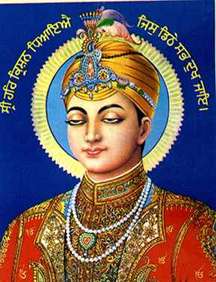 |
|
|
|
|
|
|
|
|
|
|
|
|
|
|
|
|
Guru
Harkrishan was the eighth Guru of Sikhs. He was the younger son of Guru Har
Rai. He was born to Krishan Kaur in July, 1656 AD. As Guru Har Rai was not happy
with his elder son Ram Rai because of his having changed the text of a line
of the Adi Granth in Mughal Court at Delhi, he appointed Guru Harkrishan as
his successor in October, 1661 AD at the tender age of five. That is why Guru
Harkrishan is also known as Bal Guru (Child Guru). |
|
|
|
|
|
|
|
|
|
|
|
|
|
|
|
|
|
|
|
|
|
|
|
|
|
|
|
|
|
When
Guru Harkrishan Sahib came to Delhi, tyhe city was then in the grip of an epidemic.
Guru Ji went all over the city even in narrow lanes and bylanes. He gave succour
to all in anguish without any discrimination whatsoever. His very presence and
the Divine Look would rid the patients of their sufferings. |
|
|
|
|
|
|
|
|
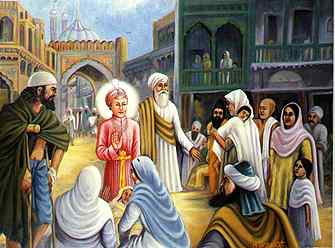 |
|
|
|
|
|
|
|
On
a complaint by Ram Rai, Aurangzeb called Guru Harkrishan to Delhi. He came to
Delhi and stayed at the bungalow of Raja Jai Singh (now known as Gurdwara Bangla
Sahib) but refused to meet the king. An epidemic was raging in Delhi at that
time. The Guru provided a healing touch to the sick. He was himself taken ill
and died of small pox in (March 1664 AD) and was cremated on the banks of Yamuna
in Delhi where now stands Gurdwara Bala Sahib. On his last day, the Guru called
for five paise and a coconut. He took them and not being able to move his body
waved his hand three times in the air by way of pointing out his successor and
said "Baba Bakale" i.e. his successor will be found in the village of Bakala.
The words were deeply significant as they helped in maintaining the line of
succession. |
|
|
|
|
|
|
|
Guru
Harkrishan ascended the ecclesiastical throne at the age of 5 years and 8 months.
He was blessed with the divine spirit. When Guru Ji came to Delhi, the city
was suffering of an epidemic. Guru Ji went all over the city and He gave solace
to those in anguish. His Divine presence and Divine Look would rid the patients
of their maladies. |
|
|
|
|
|
|
|
|
|
|
|
|
|
|
|
|
|
|
|
|
|
|
|
|
|
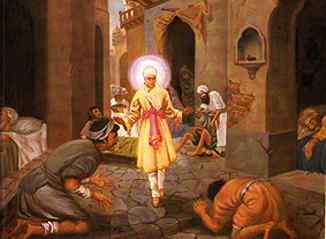 |
|
|
|
The
Guru's life, though short chronologically speaking, made the foundation of Sikhism
much stronger by maintaining the hallowed traditions of self-sacrifice, truthfulness,
care for others and fearless resolve and by providing continuity in the line
of succession. His pontificate is marked by the revival of Mughal interference
in Sikh affairs. |
|
|
|
|
|
|
|
|
|
|
|
|
|
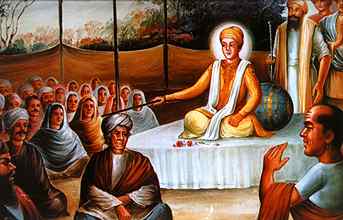 |
|
|
|
|
|
|
|
|
|
|
|
|
|
MUTE RECITES SALOKAS
Sri Guru Harkrishan Ji was the
epitome of sensibility, generosity and courage. There is a famous incident
from his early age. Once on the way to Delhi from Punjab he met an arrogant
Brahmin Pundit called Lal Chand in Panjokhara town. The Pundit asked him
to recite Salokas from the Geeta since his name was similar to that of Lord
Krishna. Guru Ji invited a mute person called Chhajju Mehra and placed his
stick on his head. He immediately started interpreting salokas from the
Geeta. Everybody around was dumbstruck. Lal Chand's arrogance too was shattered
and he asked for Guru Ji's forgiveness.
|
|
|
|
|
|
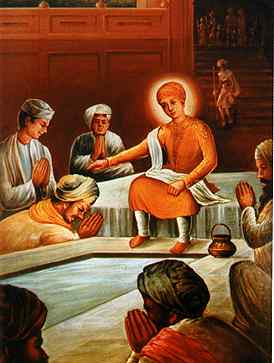 |
|
|
|
|
|
|
|
|
|
|
|
|
|
|
|
|
|
|
|
|
|
|
On
the invitation of Delhi's Sikh Community, Guru Harkrishan Ji went there and
stayed with Raja Jai Singh. Now Gurdwara Bangla Sahib stands there. At that
time cholera was raging in the area. Guru Ji went through the city, healing
the sick. The afflicted were very happy to receive holy water from him.(This
water has divine qualities and even now people utilise this water for their
uncureable illnesses) During his stay he propogated Sikhism. This was the time
of Mughal Emperor Aurangzeb. Once he went to meet Guru Ji at Jai Singh's bungalow
but Guru Ji refused to see him. |
|
|
|
|
|
|
|
|
|
|
|
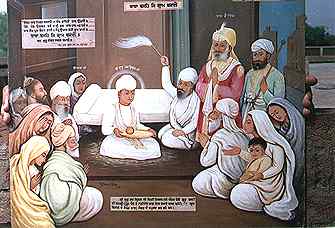 |
|
|
|
|
|
|
|
|
|
|
|
|
|
|
When
Guru Ji realised that his time has come for ascenscion, he took a coconut and
5 paise and uttered these words " Baba Basehe je Gram Bakaley" - meaning
that the next Guru (his Grandfather- Guru Teg Bahadur) ) resides in the village
of Bakala - who will take over the Guru Ship after him.. |
|
|
|
|
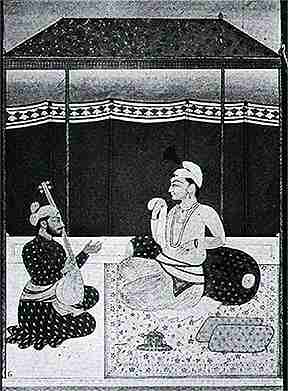 |
|
|
|
|
|
|
|
|
|
|
|
|
|
|
|
|
|
|
|
|
|
Guru Harkrishan- a painting at the Lahore Museum (courtesy F.Aijazzudin)
Guru Harkrishan is shown as a seated youth tastyefullyt dressed in
an embroidered white tunic. He sits listening to a musician who accompanies
himself on tambura.
|
|
|
|
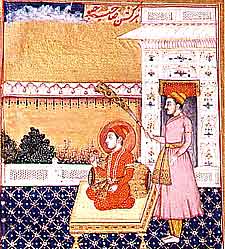 |
|
|
|
|
|
|
|
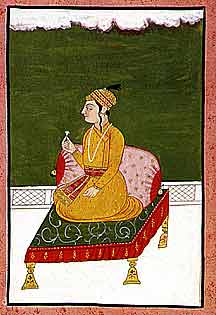 |
|
|
|
|
|
|
|
|
|
|
|
|
|
Both
these painting of Guru Harkrishan by Muslim Artists. (Courtesy of T.S.Randhawa
from his book "The Sikhs, Images of a Heritage") |
|
|
|
|
|
|
|
 |
 |
 |
 |
 |
 |
 |
 |
 |
 |
 |
 |
 |
 |
 |
 |
 |
 |
 |
 |
 |
 |
 |
 |
 |
 |
 |
 |
 |
 |
 |
 |
 |
 |








